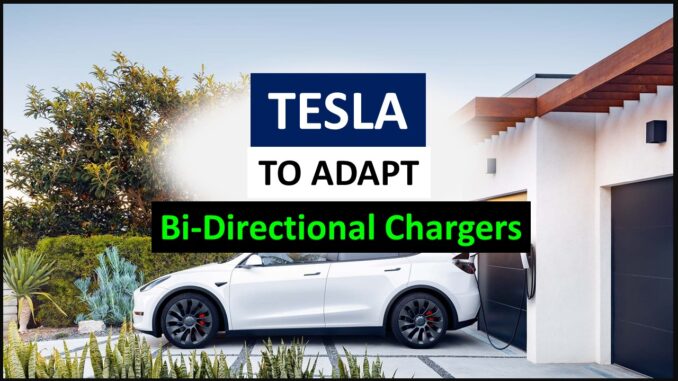
Mass adoption of electric vehicles is expected to increase the overall energy demand in the world. Being said Electric vehicles also can help manage energy effectively by managing the powerload.
Any electric vehicle that is linked to a smart charging station or has an internet connection can have a controllable load, or the ability to choose when an EV charges.
What is Bidirectional Charging?
When an EV is plugged into a charger, it can give back energy to the power grid or any other required places during peak demand and only charge when the overall demand is lower.
[READ MORE]: Vehicle to Grid for Electric Vehicles
People’s ideal scenario is one in which millions of electric vehicles are all often linked to the grid. They may take up a lot of clean energy produced by solar panels during the day and return it to the grid at night.
The system would start to behave like the tides, dispersing clean energy throughout the day and regaining it at night. However, compared to residential usage, the performance criteria that apply to the grid are substantially stricter. Strict requirements for voltage and frequency must be met for the grid to operate correctly.
How Bidirectional Charging Can Be Done
Ideally, there would be millions of GWh accessible in all those electric vehicles, negating the need for utility companies to construct massive battery storage facilities. Artificial intelligence would control the whole system to ensure that the grid always has enough electricity and that each vehicle is completely charged when needed.
There is yet another element at play. Fewer battery cells would be required worldwide. There would be just one demand stream rather than two, now there is one for grid storage and the other for electric vehicles and now it can be eliminated.
Also, environmentalists would be pleased since less lithium, manganese, nickel, copper, and cobalt mining would be required.
Let us look at some terminologies in the Bidirectional charging
- Vehicle To Load (V2L) – This feature enables the battery to supply electricity to extraneous items like power tools, outdoor lighting, or even another EV that needs charging.
- Vehicle-to-house (V2H) enables the battery to run certain house circuits such as air conditioners, heat pumps, refrigerators, and other appliances in the event of a power outage.
- The vehicle-to-grid (V2G) method enables the battery to supply power to the electrical grid.
Tesla & Bidirectional Charging
Although companies like Nissan and Honda have been openly experimenting with the technology, Tesla has always been hesitant to deploy bidirectional charging. About employing bidirectional charging in Tesla models, both CEO Elon Musk and co-founder and former CTO JB Straubel have voiced against the technology. The main reason is that bidirectional charging can lead to faster battery deterioration and also the technology may not have the expected impact without a large number of electric vehicles on the road.
According to Elon Musk, the concept is mostly ineffective without being combined with a home storage battery like a Tesla Powerwall.
To quote Elon, “I don’t think very many people are going to use bidirectional charging unless you have a Powerwall, because if you unplug your car, your house goes dark and this is extremely inconvenient. I think there’s some value there as a supplemental energy source down the road, where, if you have a Powerwall, you don’t diminish the convenience of the people in the house.”
Elon is on point. Only when the EV is stopped and plugged in, the battery can be used to power a home or sell electricity back to the grid. Otherwise, whenever the car is utilised, the home might go completely dark.
Everything being said there is one more thing to look at.
Take A Look At The Numbers
However, Elon did leave out one important point. The enormous size of the battery pack, particularly in a Long Range EV. The current Powerwall has a total energy capacity of 13.5 kWh and a usable capacity of 14 kWh. However, being able to connect a 100-kWh Model S or Model X to the Powerwall would double the amount of capacity that is available and, in certain cases, provide days of backup power.
The conclusion seems to be that Tesla will adopt bi-directional charging, just as the rest of the industry has done with the Tesla NACS charging standard for North America. As EVs become more common, all-electric cars may include V2L and/or V2H functionality as standard equipment by 2030.
